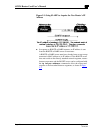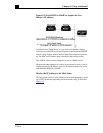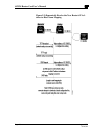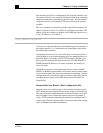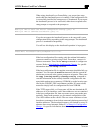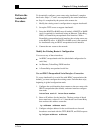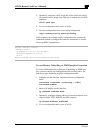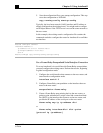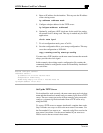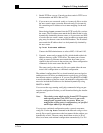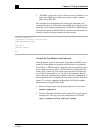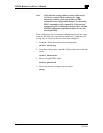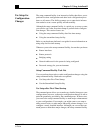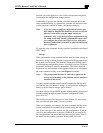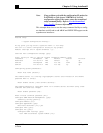
AI2524 Router Card User’s Manual
Page 5-14 August 1997
2524UM
4. Enter an IP address for the interface. This step sets the IP address
of the existing router.
ip address
address mask
5. Configure a helper address for the TFTP server.
ip helper-address
address3
6. Optionally, configure a DCE clock rate for the serial line, unless
an external clock is being used. This step is needed only for DCE
applications.
clock rate
bps1
7. To exit configuration mode, press <Ctrl-Z>.
8. Save the configuration file to your startup configuration. This step
saves the configuration to NVRAM.
copy running-config startup-config
You must use a DTE interface on the new router because the network
always provides the clock signal.
In this example, the existing router's configuration file contains the
commands needed to configure the router for Frame Relay AutoInstall
on a serial line:
Router# configure terminal
interface serial 0
ip address 172.31.20.20 255.255.255.0
encapsulation frame-relay
frame-relay map ip 172.31.10.1 255.255.255.0 48
ip helper-address 172.31.20.5
Set Up the TFTP Server
For AutoInstall to work correctly, the new router must resolve its host
name and then download a name-confg or a name.cfg file from a TFTP
server. The new router can resolve its host name by using a network-
confg or a cisconet.cfg file downloaded from a TFTP server or by
using the DNS.
To set up a TFTP server to support AutoInstall, complete these tasks.
Step 2 includes two ways to resolve the new router's host name. Use
the first method if you want to us
network-confg
file to resolve the
new router's host name. Use the second method if you want to us
DNS to resolve the new router's host name.



